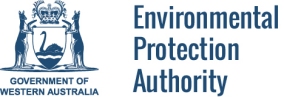Burt, J.S., Kendrick, G.A., Masini, R.J., Simpson, C.J., 1995. Light and Posidonia sinuosa seagrass meadows in the temperate coastal waters of Western Australia. II. Effect of epiphyte species assemblage and biomass on attenuating light to the leaf surface. In: Contribution to the Southern Metropolitan Coastal Waters Study (1991–1994), Department of Environmental Protection, Perth, Western Australia. Technical Series 62, p.22.
Abstract
Algae growing on artificial seagrass (periphyton) were used to examine the relationship between the epiphyte biomass on the leaves of the seagrass Posidonia sinuosa and the attenuation of light through this layer. Epiphyte and periphyton biomass and species assemblage were monitored over an annual cycle at two sites considered to be broadly representative of the inshore protected and offshore semi-exposed zones, the two major zones where seagrass grow in the southern coastal waters of Perth. These data were used to assess the influence of seasonal and site differences in species assemblage on this relationship. Significant logarithmic relationships between percent light reduction and periphyton biomass expressed as either chlorophyll a, total dry weight or the organic, carbonate and refractory components were evident at both sites. Periphyton biomass measured as total dry weight provided the only biomass-light reduction relationship with no significant site or seasonal differences. The site and seasonal differences in the relationship for other measures of periphyton biomass were attributed to differences in the species composition of the epiphyte assemblages. At the offshore site, the epiphyte assemblage changed from predominantly filamentous species with relatively high species richness in summer to predominantly coralline species with lower species richness during winter. The epiphyte assemblage at the inshore site was comprised predominantly of filamentous species with similar species richness in summer and winter. Ambient nutrient concentration and differential erosion/abrasion due to wave action appear to be the key factors influencing the composition of epiphyte assemblages on P. sinuosa in these waters. Consequently, activities that lead to changes in the nutrient status or wave climate have the potential to alter epiphyte communities and therefore the attenuation of light through this layer and, as a result, the amount of light reaching the seagrass leaf. Furthermore, the logarithmic nature of the epiphyte biomass-light reduction relationship indicates that even relatively small increases in standing crop above background values will be potentially harmful to seagrasses growing at or near their depth distribution.
